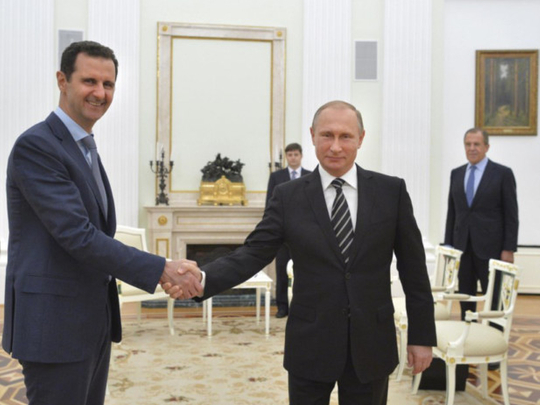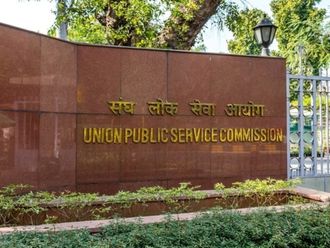
Thanks to Moscow, Syria’s Bashar Al Assad seems to be swiftly moving towards full control of large parts of the country that he lost over the last six years to various opposition groups. This will very likely improve his chances to remain in power for the time being. Al Assad gains comfort from Donald Trump’s administration current policy towards Syria, as the American president is no longer calling for toppling his regime.
Israel’s prime minister, Benjamin Netanyahu, has also reassured him that his government had no intension to remove him from power. In fact, Netanyahu has said as recently as last July in a press conference in Moscow, that “we are very happy with the [Syria’s] regime as they have not shot a single bullet at [occupied] Golan Height since signing the Separation Disengagement Agreement more than 40 years ago.”
Additionally, Moscow is regularly briefing Tel Aviv about every single move it makes in Syria and its engagement with Al Assad. Netanyahu and Putin keep their lines of communication open. Last time they met in early July was their third meeting this year, and their ninth since 2015 when Russia’s military returned to Syria to shore up the Al Assad regime in Damascus.
The Russian president has committed himself during his talks with Netanyahu to address Israel’s concern about the Iranian presence in Syria. Netanyahu demanded that Iranian forces should be eventually withdrawn but agreed on a compromise of keeping away from the Syrian-occupied Golan Heights by 80km. Putin has personally guaranteed to control the borders with Israel and prevent any attempts by Iranian forces to threaten Israel.
However, for Russia as the major player in Syria, it feels that it has to ensure that Iran sees eye to eye when it comes to stability in Syria’s southern region. Therefore, Moscow has managed to convince Iranian leadership of the understanding it has reached with Israel to stabilise the government in Damascus.
Hence, it is obvious that with the direct flow of vital help from both Russia and Iran, Al Assad’s forces have made significant strides in pushing back moderate opposition groups from some strategically important cities such Aleppo and Damascus countryside areas.
However, this does not mean that Al Assad has won the war, far from it, as the conflict has not reached its conclusion yet.
What’s happening now is simply a diversion as the war clearly enters a far more critical and more dangerous period. Forces fighting on behalf of Damascus regime, the remnants of the Syrian army, various militant forces of Hezbollah, Afghani and Russian mercenaries as well as Iranian ‘Islamic Revolutionary Guard Corps’ (IRGC) have also been attacking moderate opposition stronghold in the southern provinces. But the most significant support to Al Assad is that of the Russian air power. This gives Russia an edge in tilting the balance of power in Syria in its favour.
Iran’s expansion
Furthermore, the most worrying development is Iran expansionist policy not only in Syria but also in the Middle East. With its network rapidly expanding immediately after signing the ‘nuclear agreement’ in 2015, Tehran’s land route of influence directly reaches now the shores of the Mediterranean Sea. Iran’s powerful IRGC has succeeded in bolstering Iran’s terrorist and militia groups in the entire region.
It’s generally estimated the money Iran annually spends to maintain Al Assad’s regime and various militia in the region amounts to about $16 billion (Dh58.7 billion). Financial support to Al Assad regime alone could reach $15 billion per year plus providing his troops with the much needed intelligence and military support including its ‘Quds Force’. This force is an elite division of the IRGC that specialises in training and funding.
Iran also bankrolls Hezbollah with about $850 million per annum according to its leader Hassan Nasrallah in a statement given recently to the Lebanese TV, Al Mayadeen. About $150 million is spent on the Iraqi militia ‘Hashd Al Sha’abi, better known as ‘Popular Mobilisation Forces’. It is also a known fact that Tehran has recruited about 20,000 militia from the Afghani and Pakistani Hazara minority to use in its fight inside Syria. Iran’s aid to Hamas and Islamic Jihad in Gaza amounts to $100 million per year.
Iran is also regularly supporting anti-government groups in the Gulf area, particularly the Al Houthi rebels since 2015 escalating a proxy war in the Yemen.
Tehran’s economy has been badly hit with inflation rapidly rising. The dollar has risen to 90,000 rials and as a result of the tightening sanctions, President Hassan Rouhani’s government is taking heat more than ever before.
Ordinary people are on the streets to demand fast action to end the crisis. Demonstrations against rising prices have become more frequent with protesters chanting, “Leave Gaza, leave Lebanon, and leave Syria, our life for Iran.” A sign that ordinary people have become more weary of their country’s adventurist policy in the region. Some chants were surprisingly reported reversing the usual ‘Death to Israel’ to ‘Death to Palestine’ reflecting the growing people resentment.
Iranian regime seems to be in urgent need to be rescued from its own messy foreign policy.
Mustapha Karkouti is a columnist and former president of the Foreign Press Association, London. Twitter: @mustaphatache








